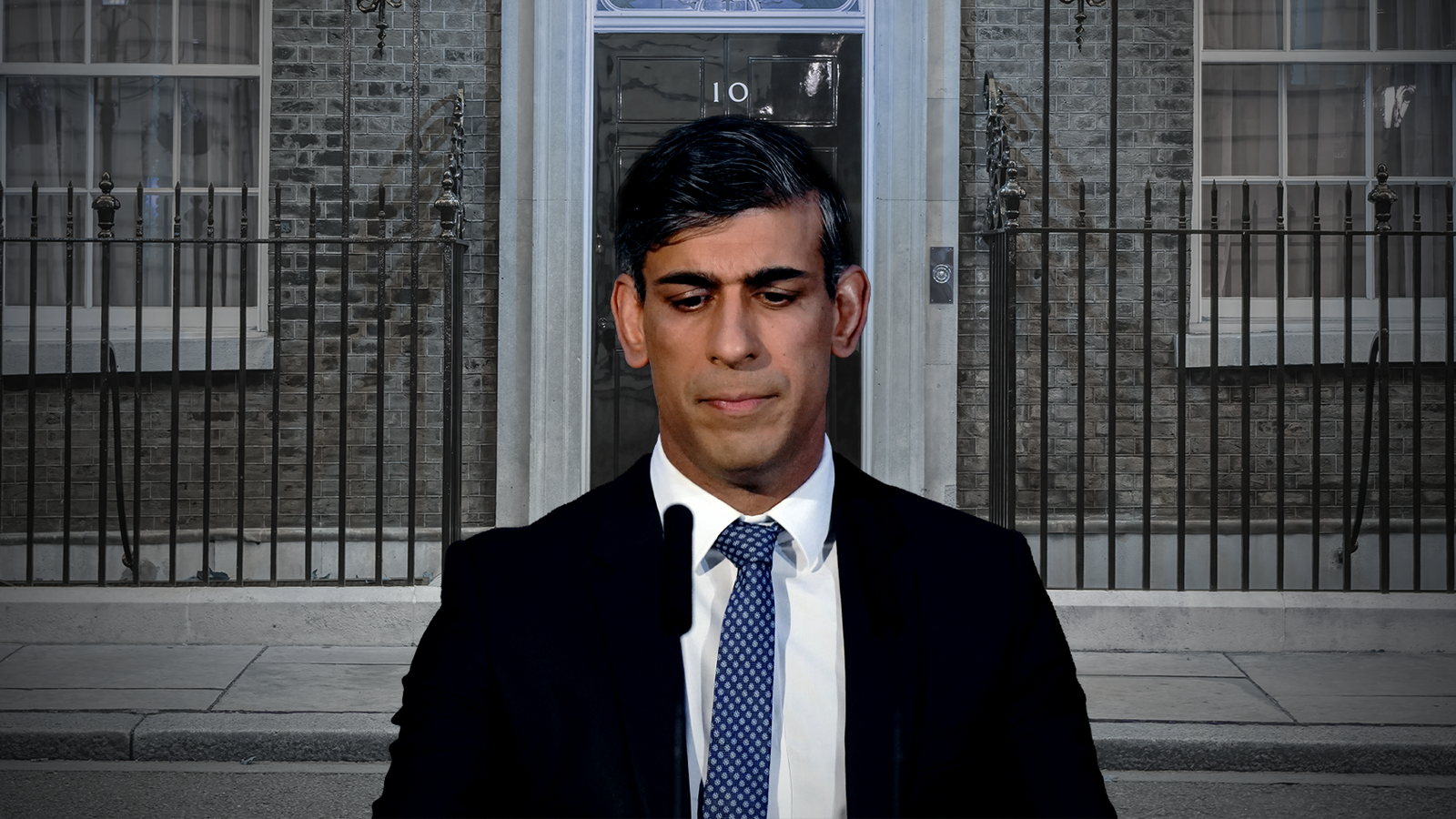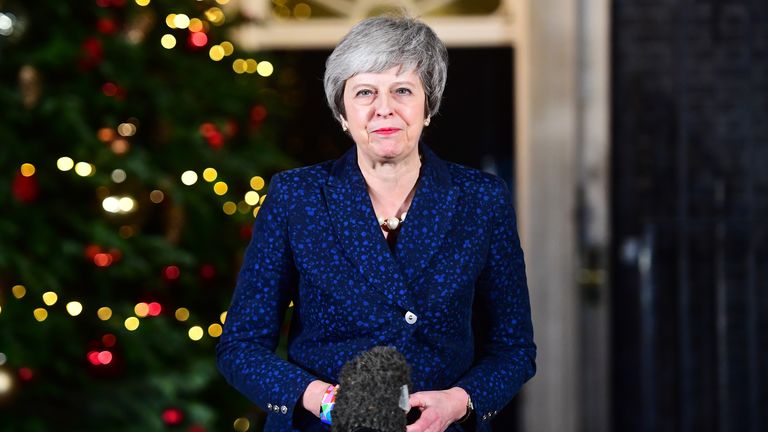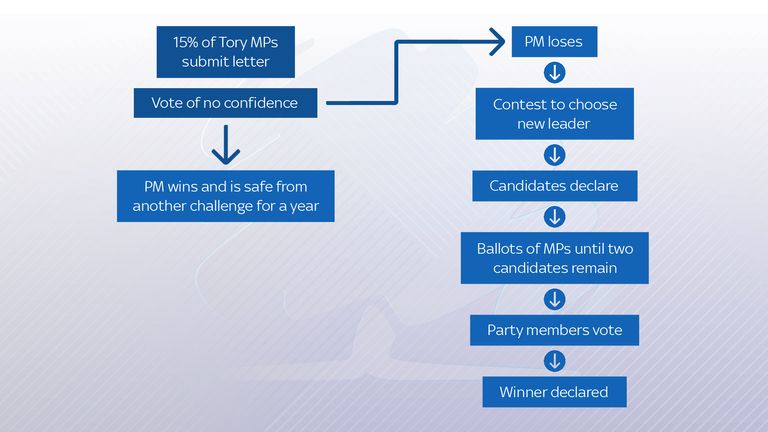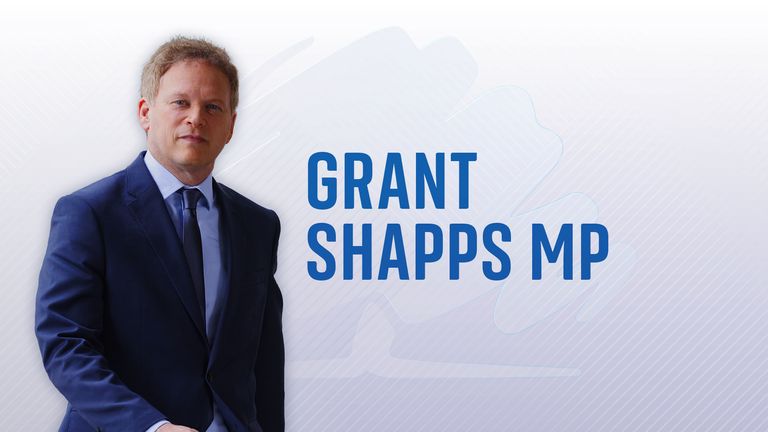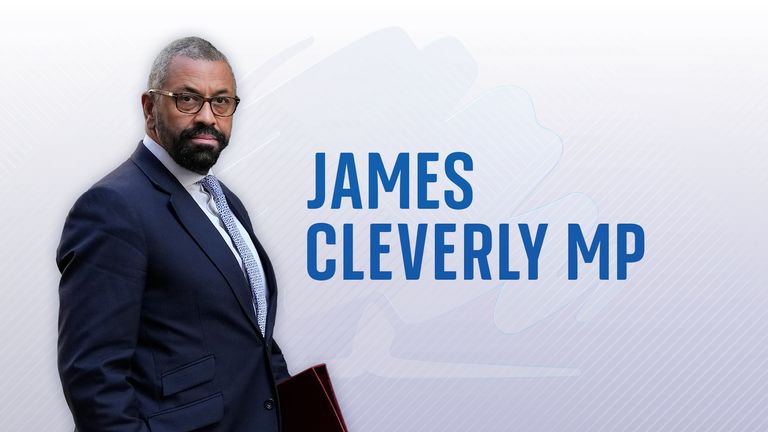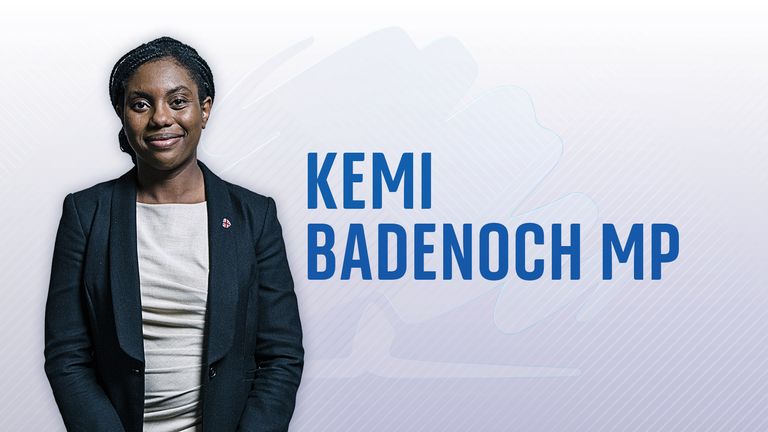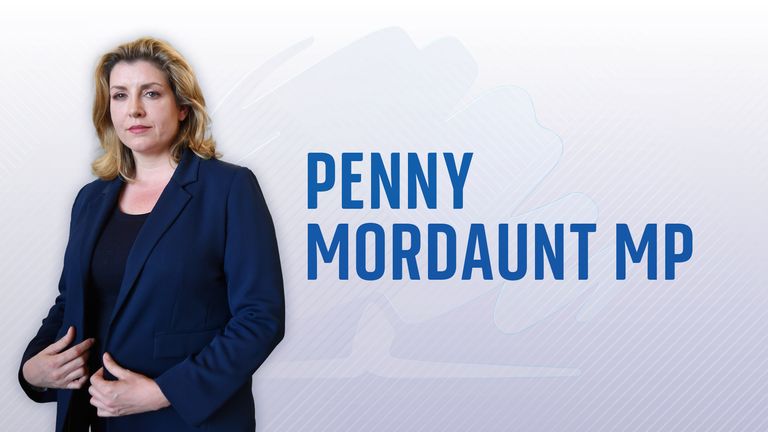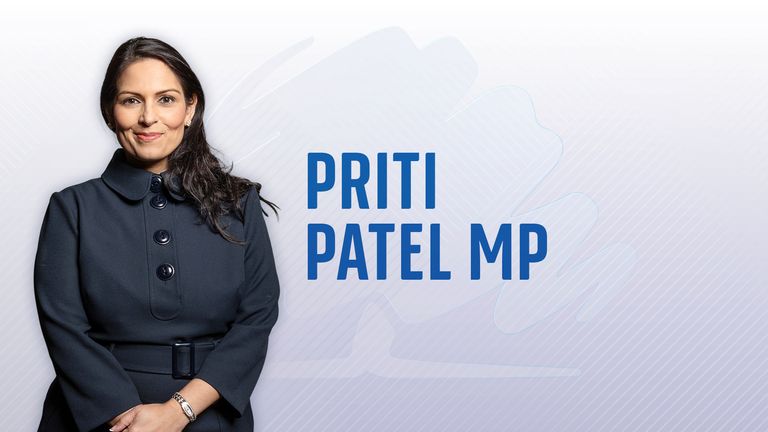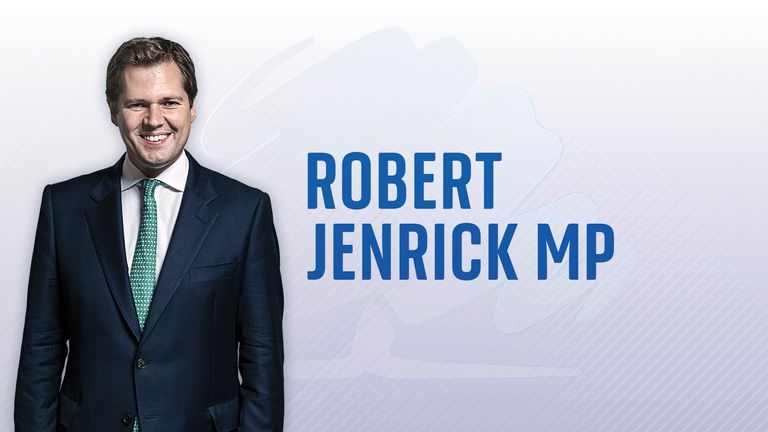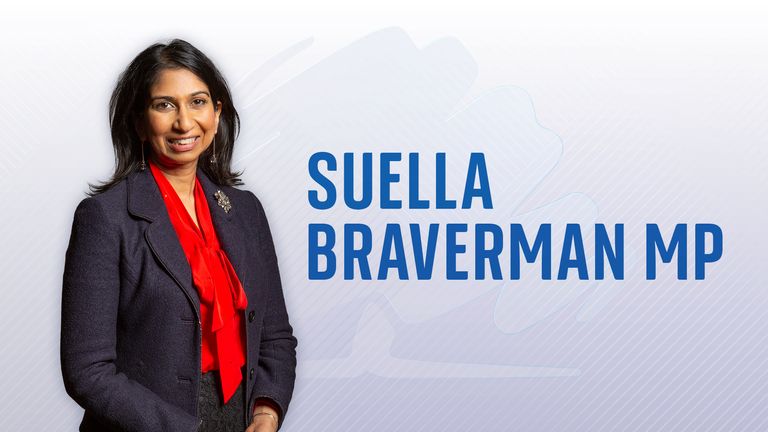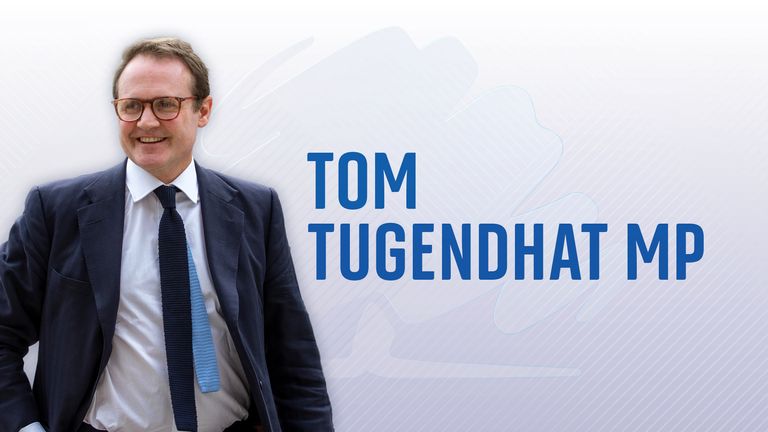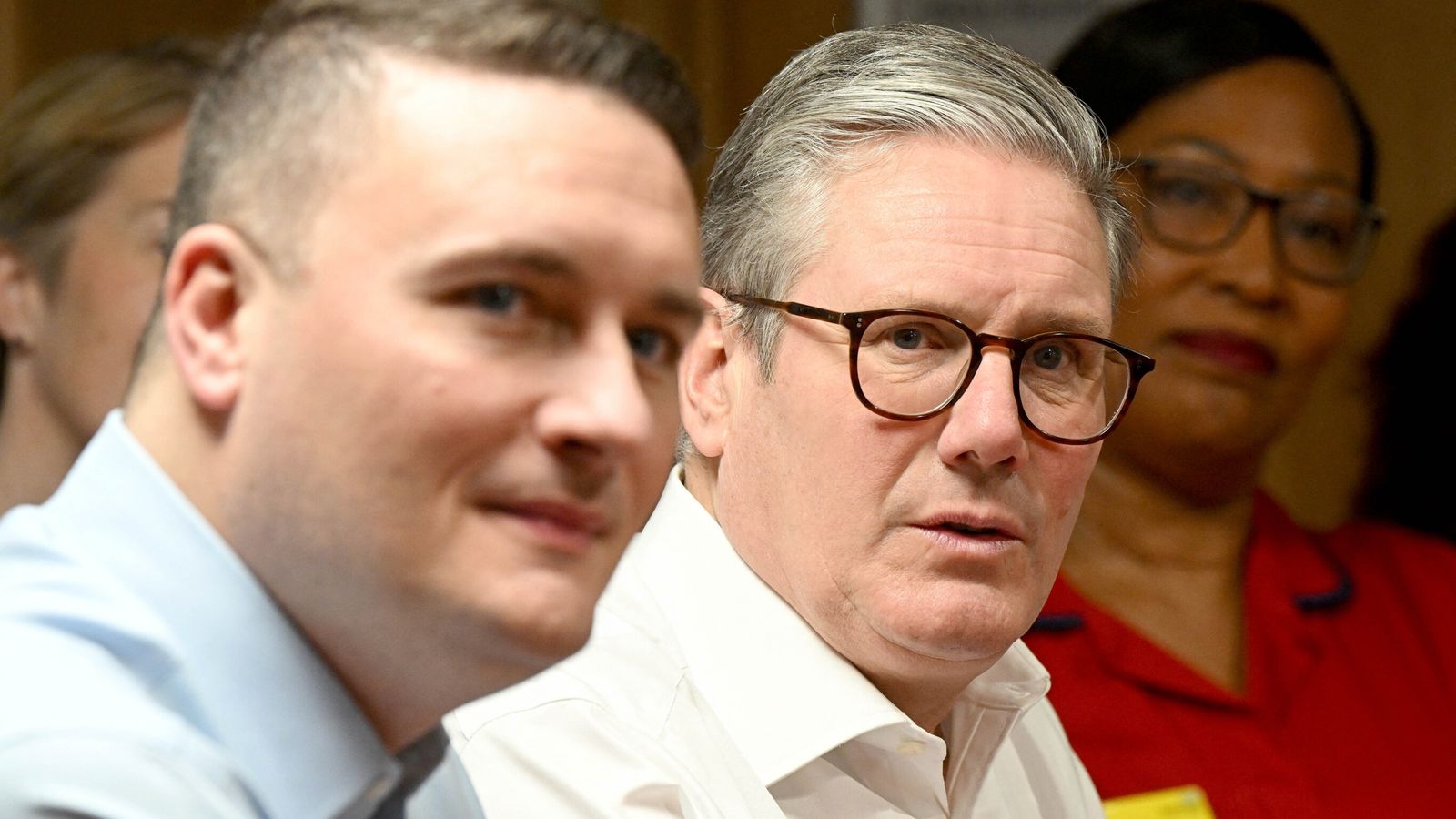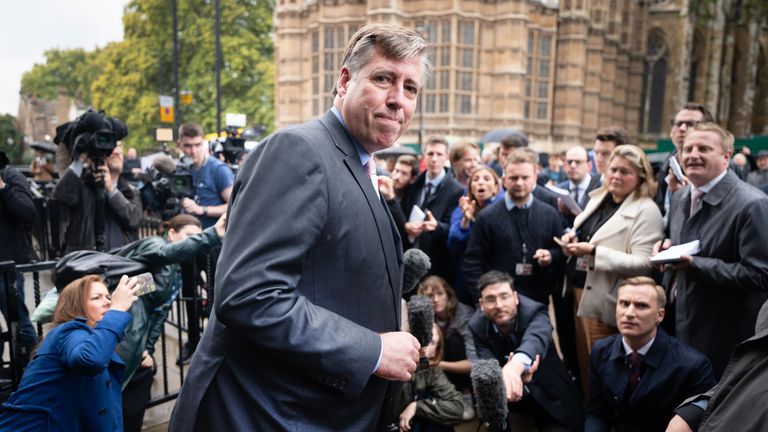
Rishi Sunak looks to have seen off his backbenchers – at least for now.
The nascent rebellions have gone quiet in the past few weeks and the Commons is currently in its Easter recess, with MPs returning to Westminster on 15 April.
Time away from parliament normally strengthens – or at least prevents the further collapse – of a prime minister, as MPs disperse back to their constituencies and away from the plot-heavy fug of Westminster.
Follow live politics updates in our Politics Hub
But a potential flashpoint is looming – May’s local elections.
A particularly bad performance by the Tories could lead to fresh pressure on the PM’s leadership and prove to be the catalyst for a concrete move to oust Mr Sunak.
Sky News explains how Tory MPs could get rid of the PM and – if they are successful – who would likely be in the running to replace him.
How to depose a prime minister
The process of removing a Tory leader is governed by the 1922 Committee – also known as the ’22 – a group of backbench Tory MPs.
If a Conservative MP wants a new leader, they write to the head of the ’22 saying they have no confidence in the incumbent.
The chair of the committee is Sir Graham Brady.
Under party rules, 15% of Tory MPs need to write to Sir Graham in order to trigger a vote. Currently, there are 348 MPs, meaning the 15% threshold sits at 53.
There is often lots of speculation about how many letters have been submitted, but the only person who truly knows is Sir Graham himself.
When the threshold is met, Sir Graham will make an announcement to the media.
There would then be a vote of all Tory MPs on whether to unseat Mr Sunak. If a majority say they have no confidence in him (50% +1) a leadership contest is triggered.
Mr Sunak would be barred from standing in the subsequent contest.
However, if the leader wins a vote of no confidence, they are then immune from a further such challenge for a year.
This happened with Theresa May in 2018, although she opted to resign a few months later amid continuing struggles to get a Brexit deal passed by MPs.
Her successor Boris Johnson also survived a confidence vote of Tory MPs in June 2022, but emerged from the ordeal weakened as a significant number of Conservatives (148, 41%) voted against him.
He announced his resignation a little more than a month later.
Are there any other circumstances in which the PM could go?
Another way Mr Sunak could be ousted is if the so-called “men in grey suits” tell him to step aside and he heeds their advice.
This is when senior Conservative MPs – like Sir Graham – tell the party leader they do not have the support of the party, and should step aside to save the ignominy of the above votes.
Of course, Mr Sunak could decide himself that the game is up and opt to jump before he is potentially pushed, but this is unlikely.
How would the contest pan out?
The exact rules for the contest would be set out by the ’22 after it is triggered.
Nominations for candidates would likely open quickly, with prospective leaders needing the support of a certain number of colleagues to stand.
Once nominations have closed, there would then be rounds of voting among Tory MPs for their preferred new leader. The worst-performing candidate in each ballot would be eliminated, until just two remain.
This pair would then compete for the votes of Conservative Party members, slugging it out to become party leader and prime minister.
This is what happened in the summer of 2022, when Rishi Sunak and Liz Truss were left as the last two candidates in the race to succeed Mr Johnson.
They then spent the summer campaigning for votes, with Ms Truss emerging victorious.
However, there have been examples in recent years of truncated contests.
The most recent of which was the second leadership contest of 2022, which Mr Sunak won unopposed after Boris Johnson and Penny Mordaunt pulled out.
In 2016, Tory members also didn’t get a chance to have their say.
Theresa May won both ballots of MPs, but she then became party leader unopposed after rival Andrea Leadsom pulled out in the wake of a controversial newspaper interview she later apologised for.
Will there be an election if there’s a new leader and PM?
In short, no.
Under our parliamentary system, the prime minister is leader of the largest party in the Commons.
If the Tories decide to get rid of Sunak and replace him, there is no legal obligation upon the party or the new leader to seek a fresh mandate from the electorate straight away.
The new PM could decide to call an election soon after taking office anyway, or they could wait it out until January 2025.
Labour’s Gordon Brown didn’t call an election when he succeeded Sir Tony Blair as PM in 2007, although he did flirt with the idea of a snap poll.
The aforementioned Theresa May did go to the country early, but this was almost a year after she took office. Boris Johnson did call an election within a few months of entering Number 10, winning a big Tory majority in December 2019.
Neither Ms Truss or Mr Sunak opted to call an election on becoming PM, although it should be noted the former didn’t get much of a chance as she was in office for less than six weeks.
Who is likely to be in the running to succeed Sunak if he goes?
Given there is not long before there absolutely has to be an election – January 2025 at the very latest – and the polls suggest the Tories are on course for defeat, you might expect the field of likely contenders to succeed Mr Sunak to be quite narrow.
But a number of names have been suggested as potential replacements if he goes.
The defence secretary has emerged as someone who could look to run for the top job, having called for defence spending to rise to 3% of GDP – something that could win the support of Tory backbenchers.
Grant Shapps, who has also served as transport secretary, previously ran to be Tory leader in 2022.
The home secretary, who has also served as foreign secretary, is being talked about in moderate Tory circles as someone who could unify the party.
A key part of James Cleverly’s brief as home secretary is the plan to send asylum seekers to Rwanda – something he is said to have reservations about in private, despite his denials.
He caused controversy last year – and was forced to apologise – after making a joke about date rape which he admitted may have undermined the government’s work to tackle drink spiking.
Kemi Badenoch, the business secretary, is seen as the darling of the right and has impressed some in the party with her no-nonsense approach.
One of her strongest advocates is Michael Gove, the levelling up secretary who has also run for leader in the past.
Ms Badenoch ran in the last Tory leadership of 2022 following Mr Johnson’s resignation, in which she was eliminated in the fourth ballot.
Penny Mordaunt has been at the heart of the rumours of a plot to replace Mr Sunak, although the Commons leader has insisted she is “getting on” with her job.
She has been mooted as a “compromise” candidate for those on the rightF because of her Brexit credentials and her performances in the Commons.
She is viewed as one of the more centrist figures in the party, but current polling suggests she could lose her seat at the next election.
Former home secretary Priti Patel, who now sits on the backbenches, was a key torchbearer for the right before she was eclipsed by Suella Braverman following the demise of Mr Johnson.
She is seen as flying below the radar but making important interventions on tax, for example.
Ms Patel is seen as one the more traditional right-wing MPs in the party, compared with her successor Ms Braverman, who holds appeal with some of the Tory MPs elected in 2019. Her seat of Witham in Essex is also one of the safest in the country.
Robert Jenrick has held a number of ministerial roles, including as communities secretary, a position he lost in one of Boris Johnson’s reshuffles.
He was originally seen as a Sunak loyalist and was appointed immigration minister, partly to keep Ms Braverman in check.
However, he later hit the headlines when he resigned over Rishi Sunak’s Rwanda bill, saying he could not continue in government when he had such “strong disagreements with the direction of the government’s policy on immigration”.
Suella Braverman has cultivated a reputation on the right as someone who is not afraid to voice controversial opinions on immigration and law and order.
She was brought in by Mr Sunak to cater to the right of the party, where she commanded support.
However, her sacking as home secretary – over comments that homelessness was a “lifestyle choice” – may have affected her standing among Tory MPs.
Tom Tugendhat is regarded highly in the One Nation group of moderate Tory MPs.
He has previously run for Tory leader, but was knocked out of the race early and later threw his support behind Liz Truss.
His recent intervention on defence spending suggests he could decide to run for the top job again.

